Six at-home cycling strength exercises for activation and injury prevention
The science behind why cyclists should stretch, and a roundup of stretches to do
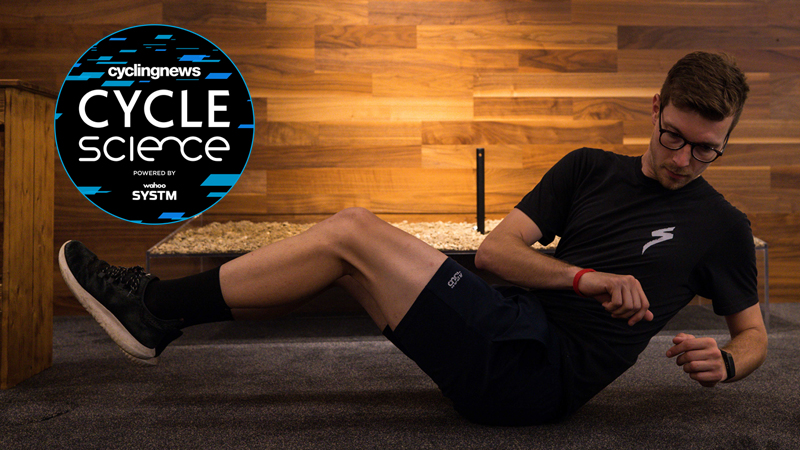
We’re often found marvelling at a video of the strength training regime we find professional cyclists and triathletes alike put themselves through. While these athletes are conditioned to such a level that allows them to go through these strength sessions, it may not be in your best interest to try and replicate many of the movements and exercises they perform.
We know that research conducted has shown these strength training regimes can have a positive influence on performance, but should everyone be doing them? The answer to that question is a little more complex and dependent on each individual's perspective.
As a coach my main goal is always to maximise the time any cyclist spends training the main components of their sport. In a cycling context, that would mean maximising your on-the-bike training time. However, where athletes may have sufficient time or may find themselves at a higher risk of injury, the introduction of strength training into the program is a no-brainer and can only be of positive influence if done correctly.
In this article we will unpack six strength workouts that any cyclist can do in their spare time at home in order to boost performance and/or reduce the risk of injury.
Muscles to target with exercises
Glutes
The initiation of the pedal stroke begins with the gluteal muscles. These muscles take the hip from a flexed position at the top of the pedal stroke to an extended position through the power phase of the pedal stroke.
These muscles are often “weakened” by the muscles becoming “lazy” due to a lack of use throughout normal day life, exemplified by people who have office jobs and spend long hours sitting at a desk. We then ask a lot of them during the pedal stroke, which becomes hard to do when the muscles are not used to being worked for long periods of time during the day.
We can solve this with a number of exercises:
The latest race content, interviews, features, reviews and expert buying guides, direct to your inbox!
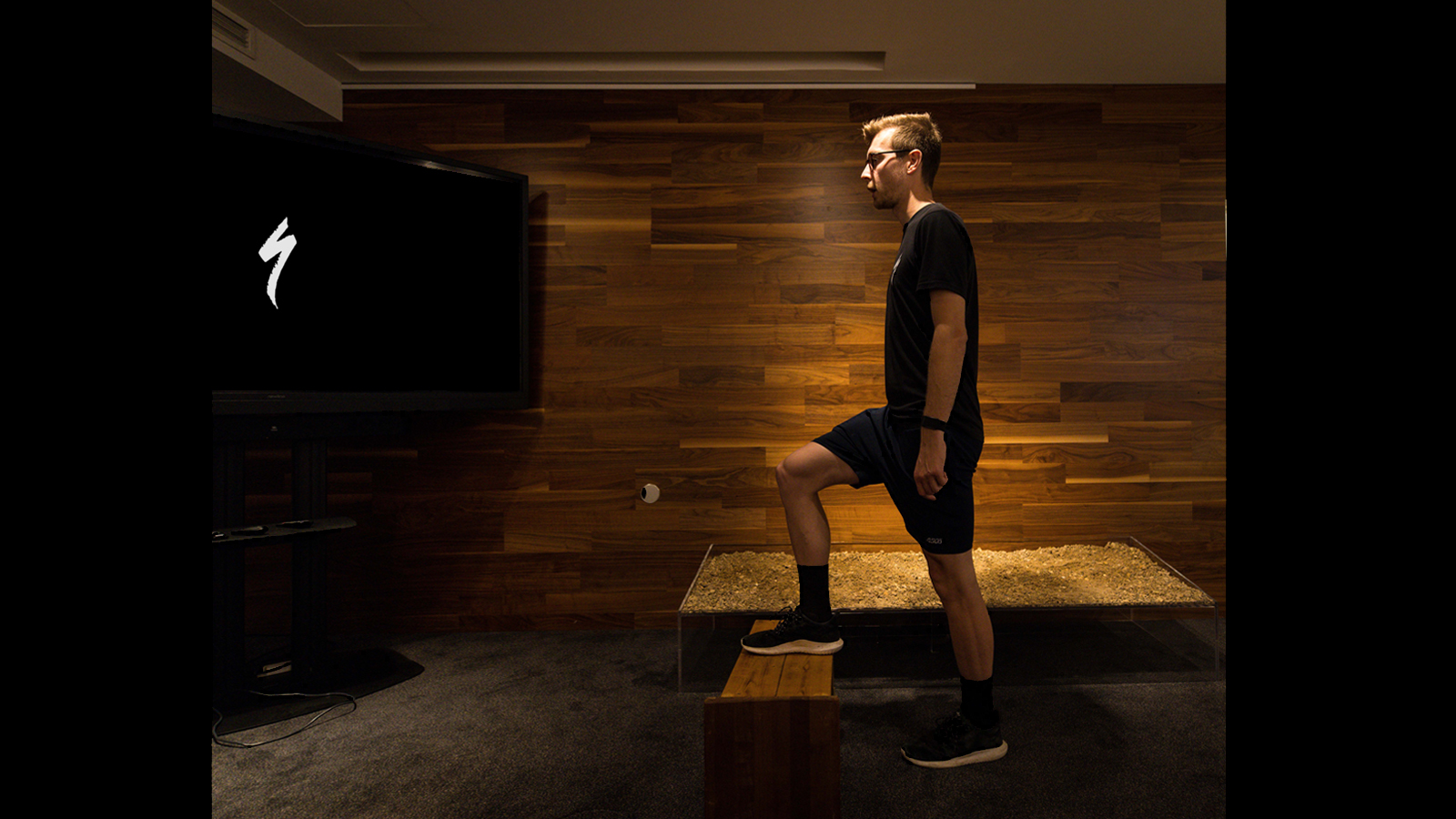
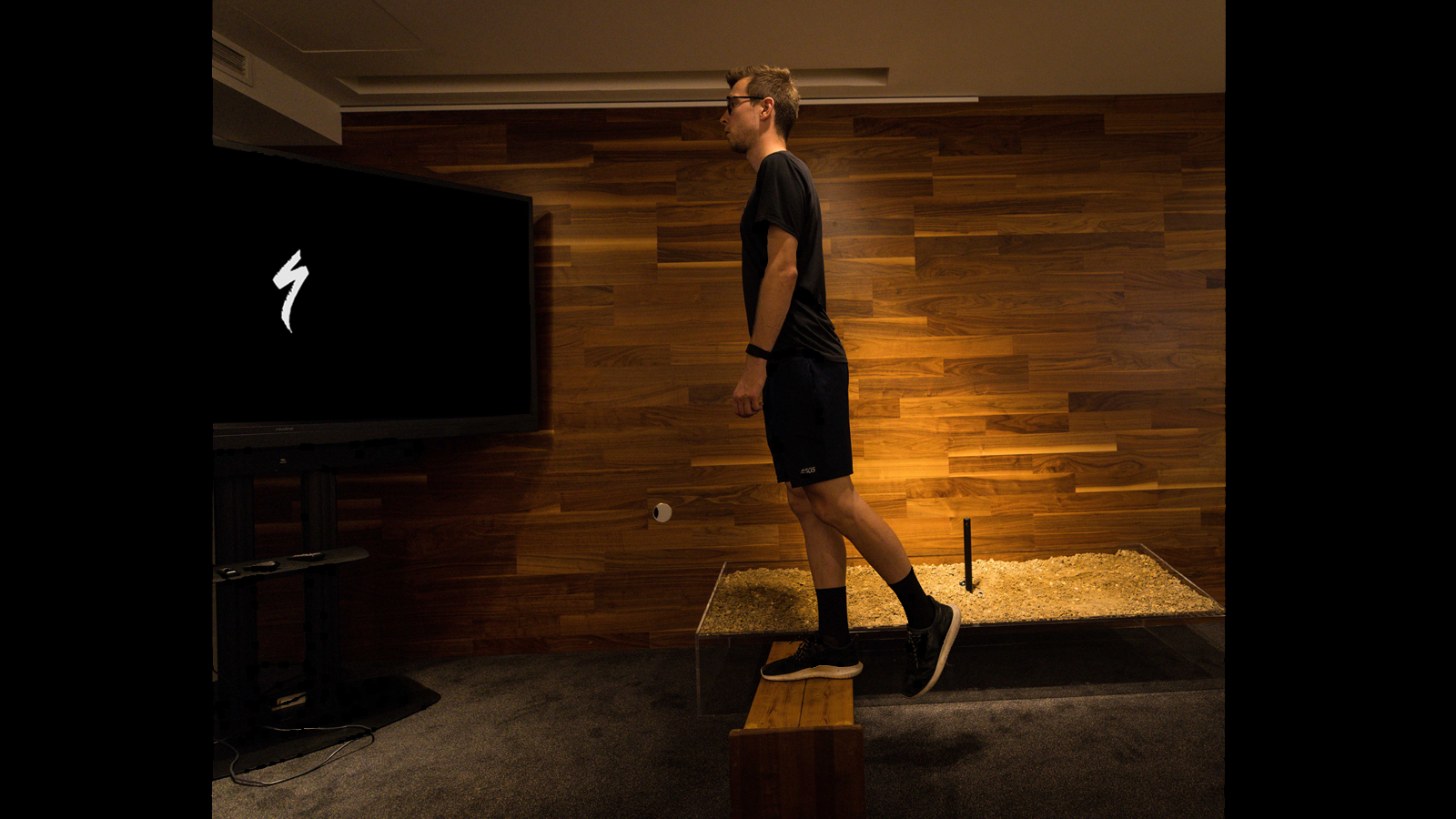
High step-ups: Three sets of 10 reps per leg with 45 seconds of recovery between sets.
- Use a slightly raised platform (roughly knee height)
- Start in a slightly forward leaning position
- Step up onto the platform, driving the non-planted leg up to waist height
- Perform a single rep on each leg, before returning to standing
Progression from high step-ups can done by moving to Bulgarian split squats.
Quadriceps
The quadriceps muscles are one of the main contributors of torque during the pedal stroke along with the glutes. The rectus femoris, however, can become shortened due to our position on the bike which can lead to anterior hip pain as well as patella-femoral (knee) pain.
Some easy at-home exercises that we can do to target the rectus femoris muscles in order to improve performance and avoid injury/pain include:
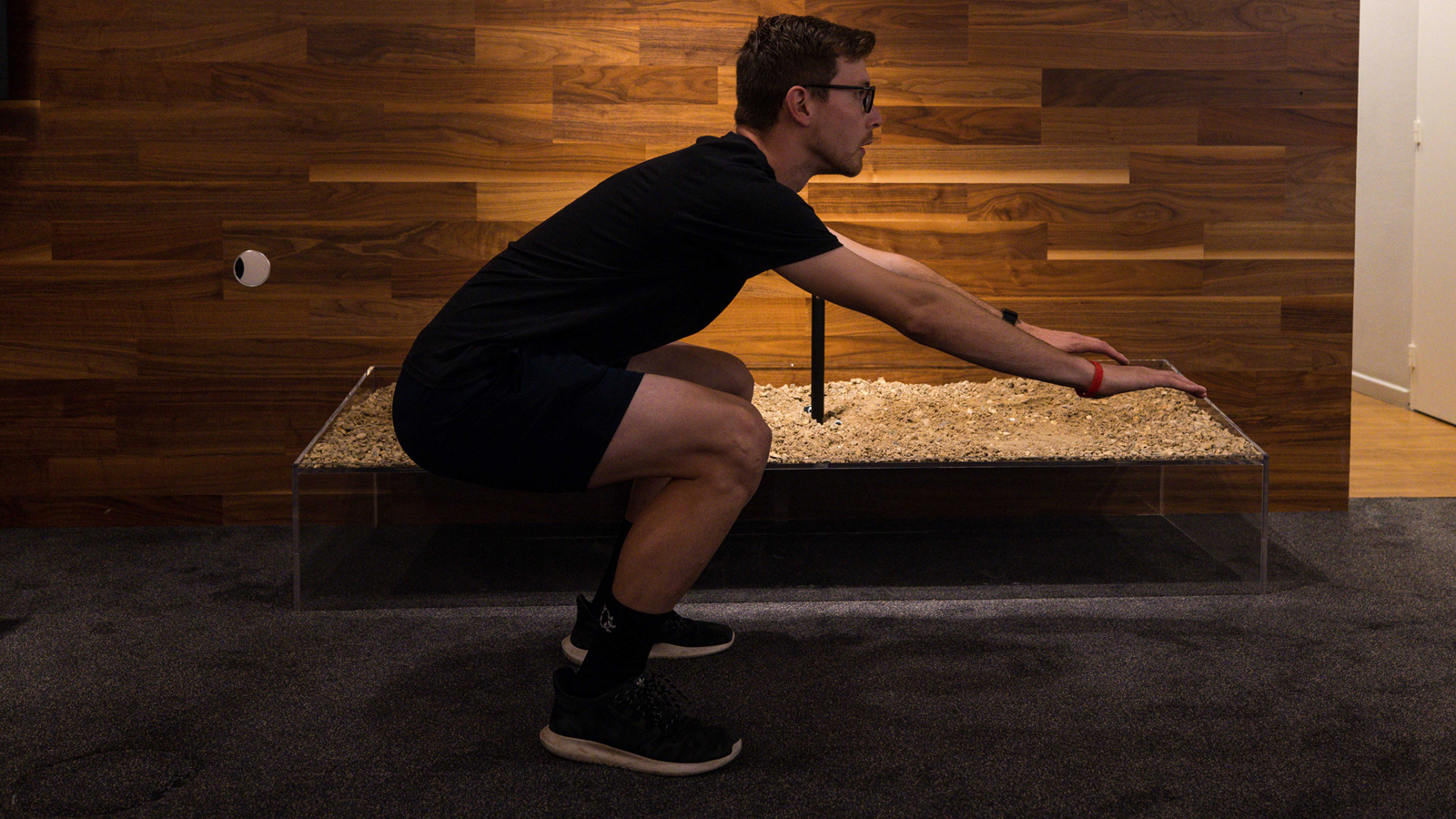
Squats: Three sets of 10 reps with 45 seconds of recovery between sets.
- Stand with your knees shoulder-width apart
- Start to lower the body by bending your knees and pushing the hips back
- Attempt to sit down as low as possible while maintaining a straight back and your feet flat on the floor
- Rise back up and repeat
Progression from squats can be achieved by adding weight to the movement or progressing to single leg squats.
Hamstrings
The hamstrings assist in producing knee flexion and function mainly on the upstroke of the pedal movement. They do however play an important role in stabilising the knee at the bottom of the pedal stroke.
Exercises that one can do at home to target the hamstrings include:
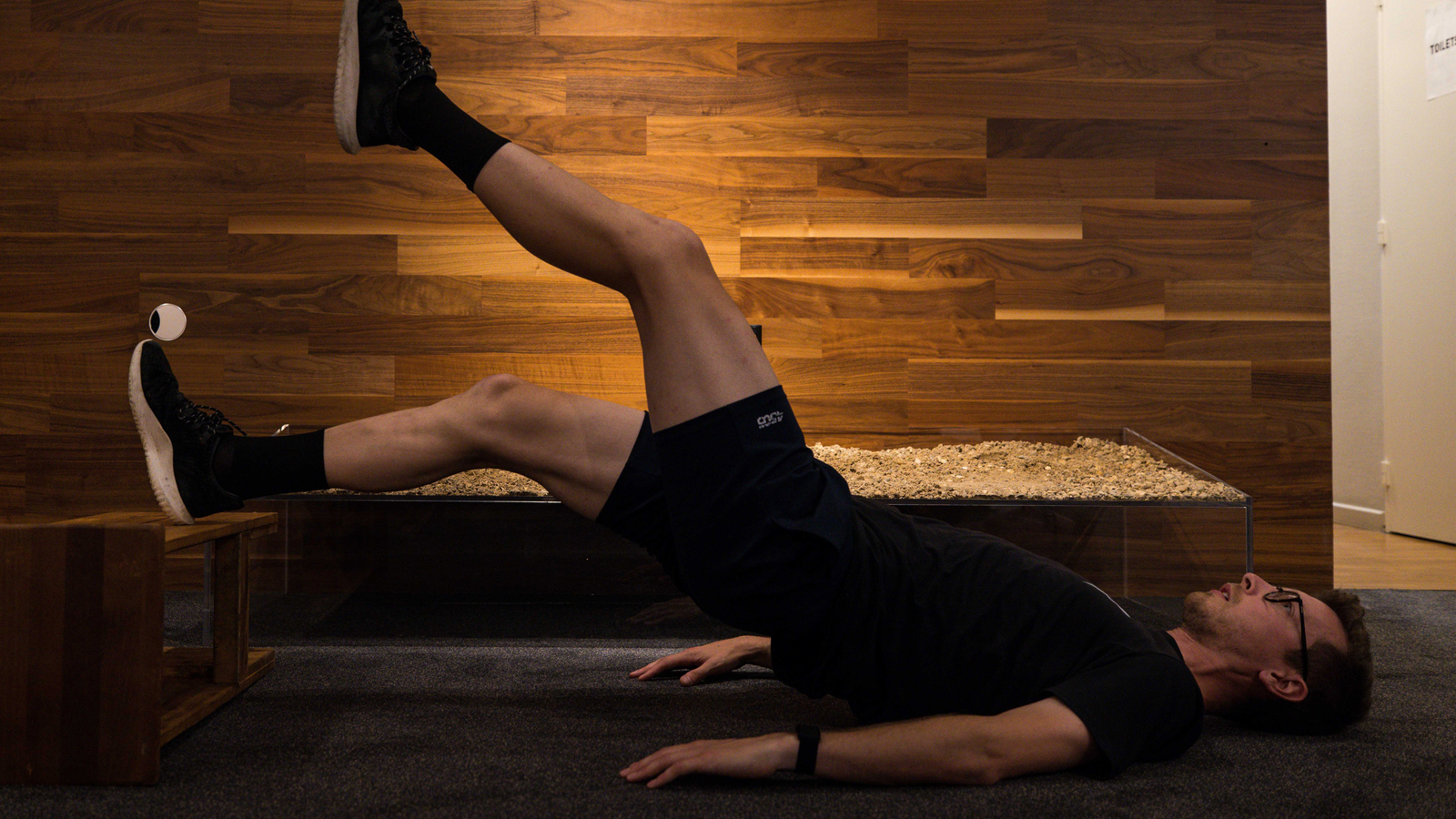
Hamstring bridge: Three sets of 15 reps with 60 seconds recovery between sets.
- Lie on your back with your heels on a bench and your knees at a 45-degree angle
- Raise one leg, then lift your hips off the floor, while maintaining a level pelvis
- Return to the floor maintaining a straight back
Gastrocnemius and Soleus (Calf muscles)
The gastrocnemius and soleus muscles are not significant contributors to power production during the pedal stroke; their main function is to stabilise the lower leg, allowing an efficient transfer of force generated by the upper leg to the pedal stroke.
These muscles are therefore just as important to target with strengthening exercise such as:
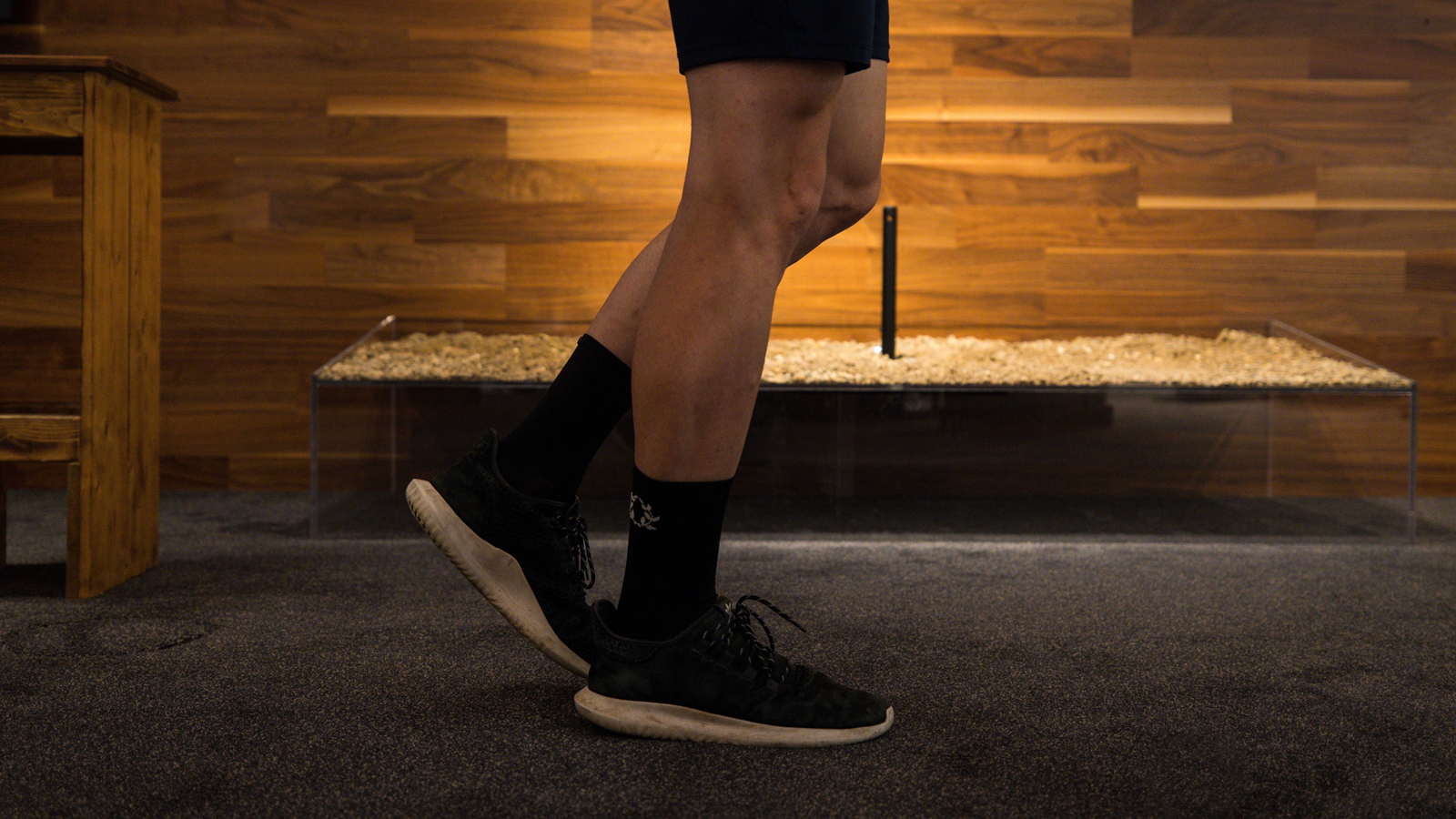
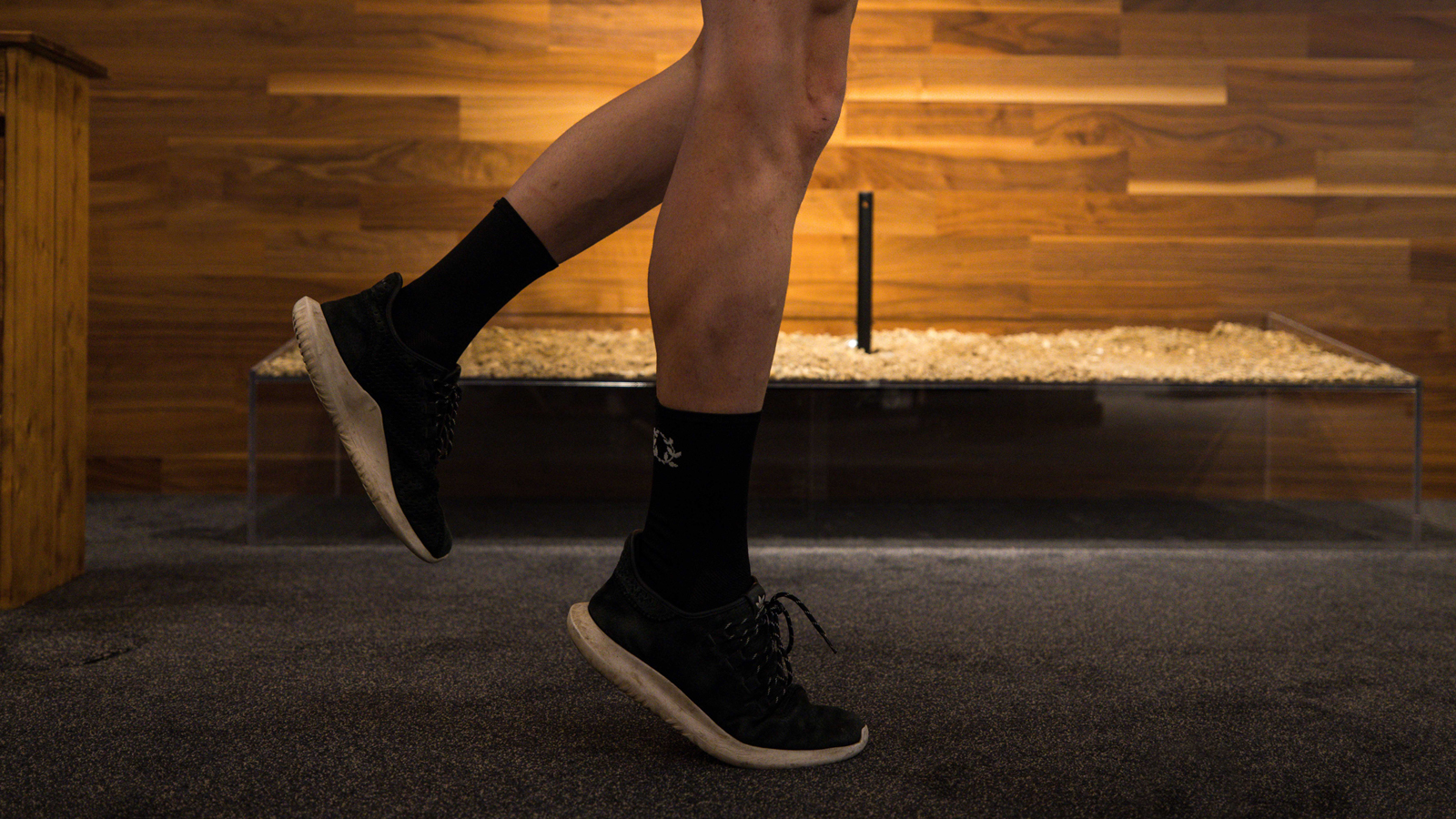
Standing calf raises: Three sets of 10 reps per leg with 45 seconds recovery between sets.
- Stand with your feet shoulder-width apart
- Raise the heels as high as possible while keeping the knees extended (but not locked)
- Slowly lower your heels back to the ground
- Start this exercise on both feet, and progress to one leg at a time
Progression of the exercise can be achieved by adding free weights held on each side of the body and doing the movements on a raised platform allowing upward and downward movements.
The core
The core has the job of maintaining stability on the bike. Abdominal muscles such as the rectus abdominus and obliques enable us to maintain a stable position while riding, leading to efficient power transfer to the pedals.
We can target the core and ensure we are developing a good stable platform to work from with the following exercise:
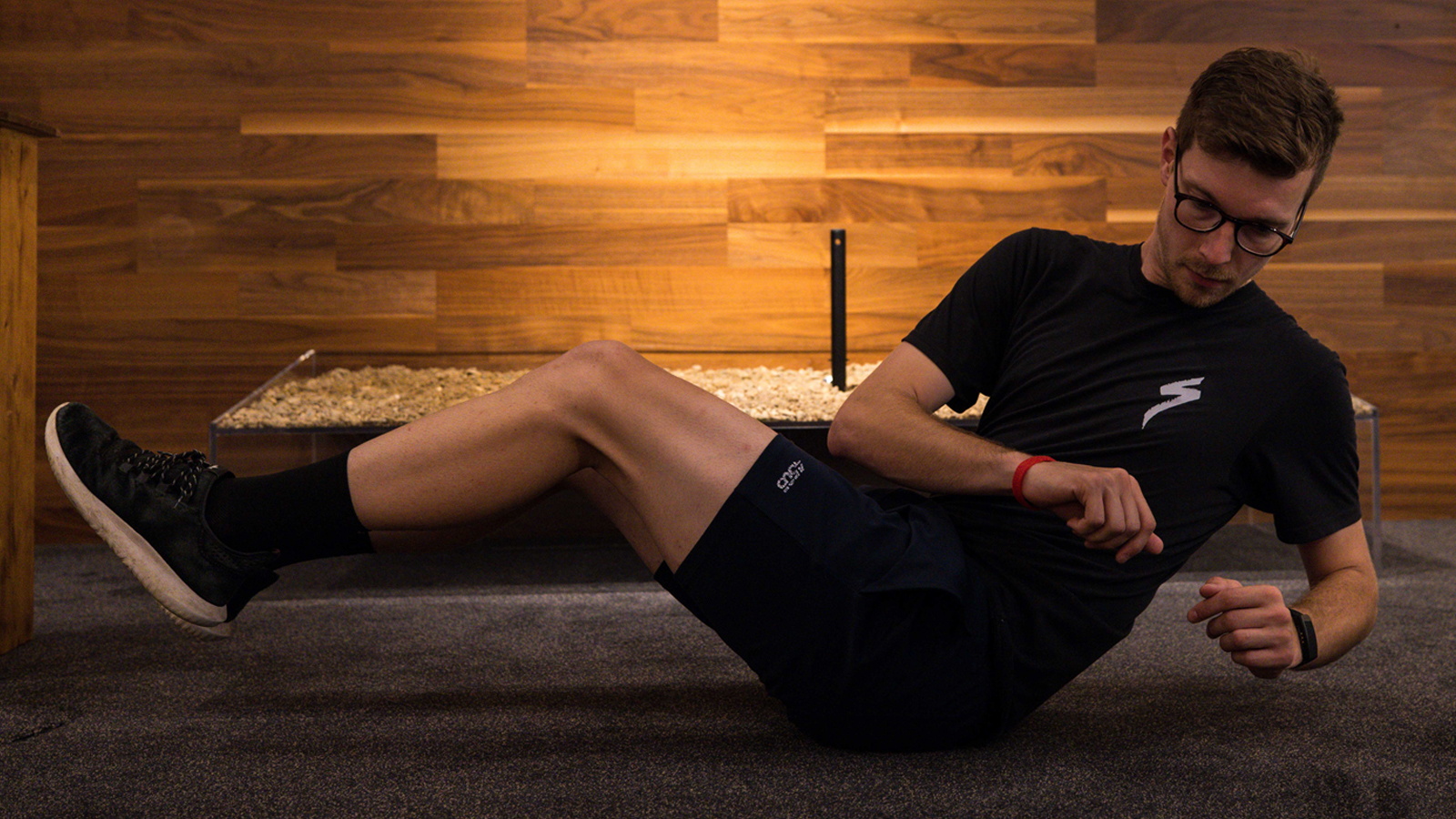
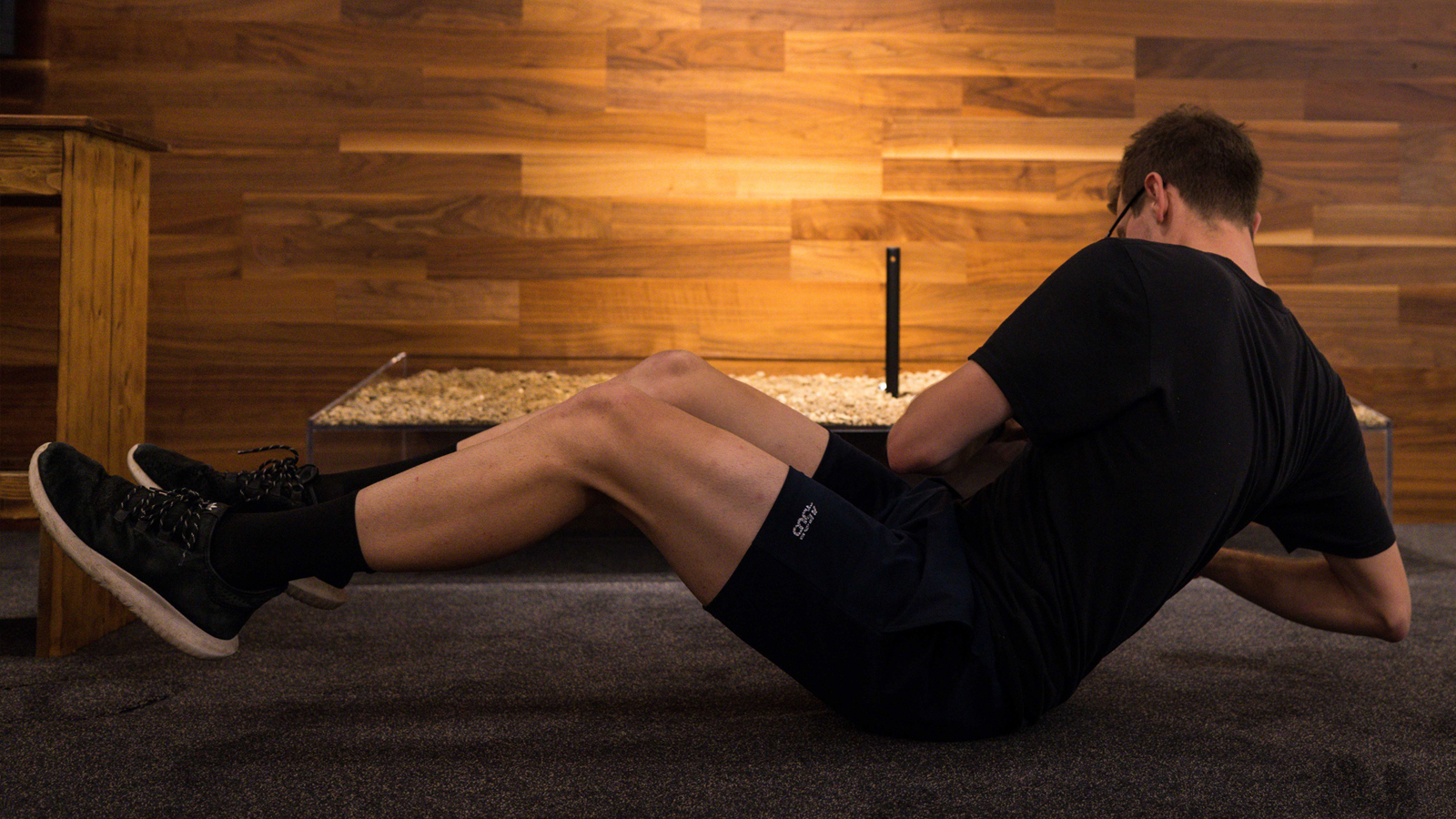
Russian Twists: Three sets of 10 reps with 60 seconds recovery between sets.
- Sit on the floor with the legs bent and feet off of the floor
- Twist your torso from side to side, squeezing your abs as you turn
- Don’t let your feet drop
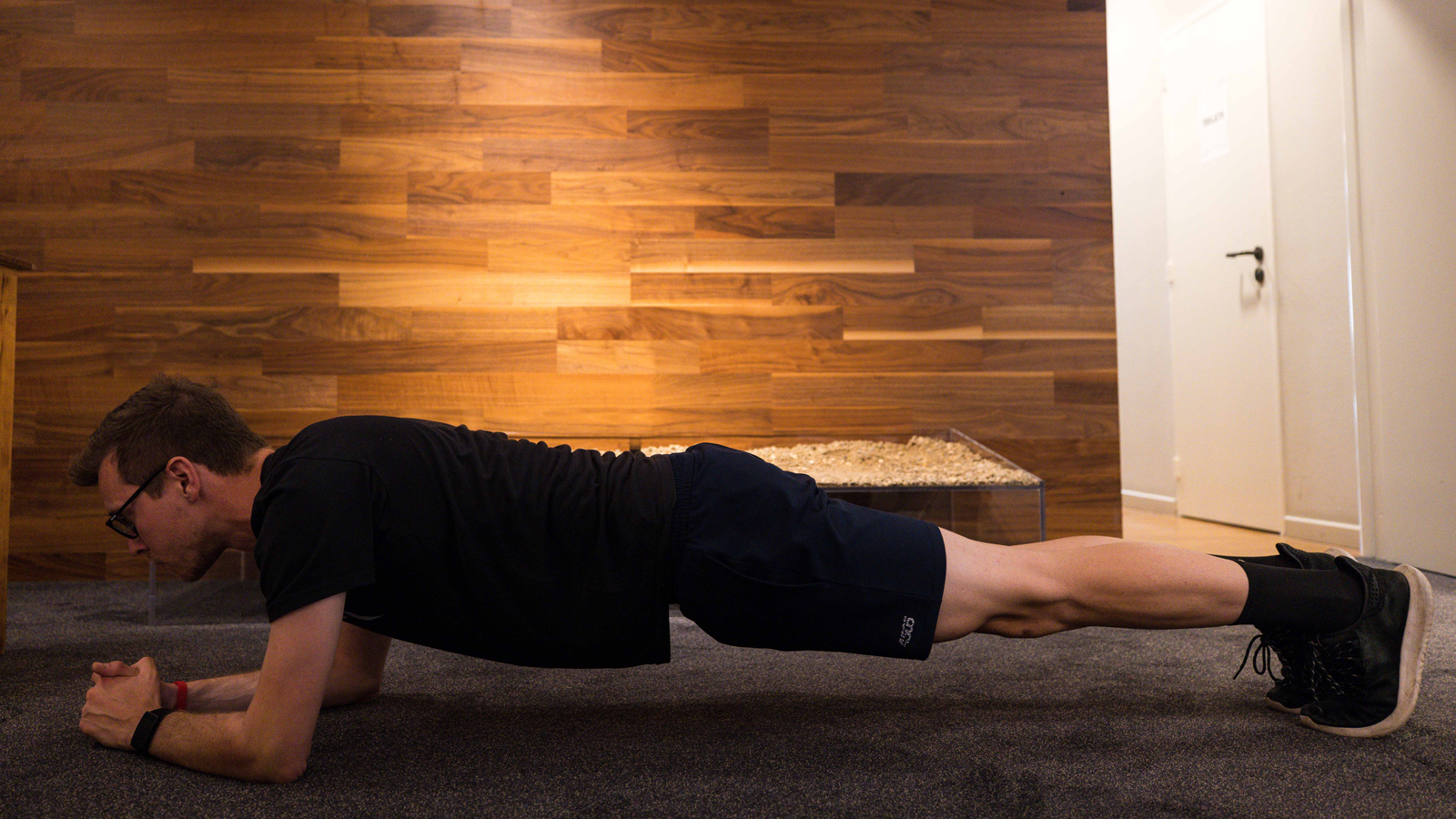
Forearm Plank: Three reps of 45-60 seconds each with 45 seconds recovery between reps.
- Lie down on the floor with forearms on the floor, elbows under the shoulders and legs extended
- Rise up so that only your toes, elbows and forearms are touching the floor
- Pull the belly button towards your spine and tighten your buttocks
- Hold this position stable
Strength-training principles
- Include exercises where the muscle action, muscles engaged, and the movement pattern are similar to the action on the bike. In cycling, the muscles around the hip, knee and ankle joints are required to work together in order to generate force on the pedals, so this should be your primary focus.
- When starting off with strength training you should reduce your total endurance training volume. A side-effect of the introduction to strength-training is often ‘heavy’ or ‘sore’ legs. Simply adding strength training to an already high volume training load can negate any positive improvements to be found in cycling performance.
- Two sessions per week over a 8–12 week period are sufficient to achieve strength increases. Start with lighter loads and then progressively increase weight while reducing reps.
Strength-training tips
- Pair your weight training sessions within 12 hours of your interval / key sessions for maximum benefit
- Complete your interval / key training sessions before your strength sessions when paired on the same day
- Allow for adequate recovery from session to session, this can be done by following hard days with easy days
- Perform between four and 10 reps with two to three sets with approximately two to three minutes recovery between sets.
- Start with 10 reps and progress to a heavier load and reduce reps over time
- Perform your lifts as quickly as possible during the concentric phase (cycling-specific phase), while the eccentric phase (non-cycling specific phase) should be performed more slowly (lasting 2 – 3 seconds).
If you are experiencing any symptoms of overuse or injury, seek professional advice before undertaking any of the above exercises.
Jarred Salzwedel completed his Honours degree in Sports Science at the Nelson Mandela Metropolitan University in 2013. His Master's degree focused on investigating training adaptations to differing high-intensity interval training programmes in cyclists.
He has raced both on the road and track at a National level in the Junior ranks which led to his interest in the science behind training and conditioning, as well as his passion to help athletes optimise their performance.
Jarred owns and manages Cycle Dynamic Coaching - a coaching platform that looks after and advises some of South Africa’s top Road and Track cyclists. He has extensive knowledge in exercise physiology having previously focused on the physiological testing of endurance athletes.

